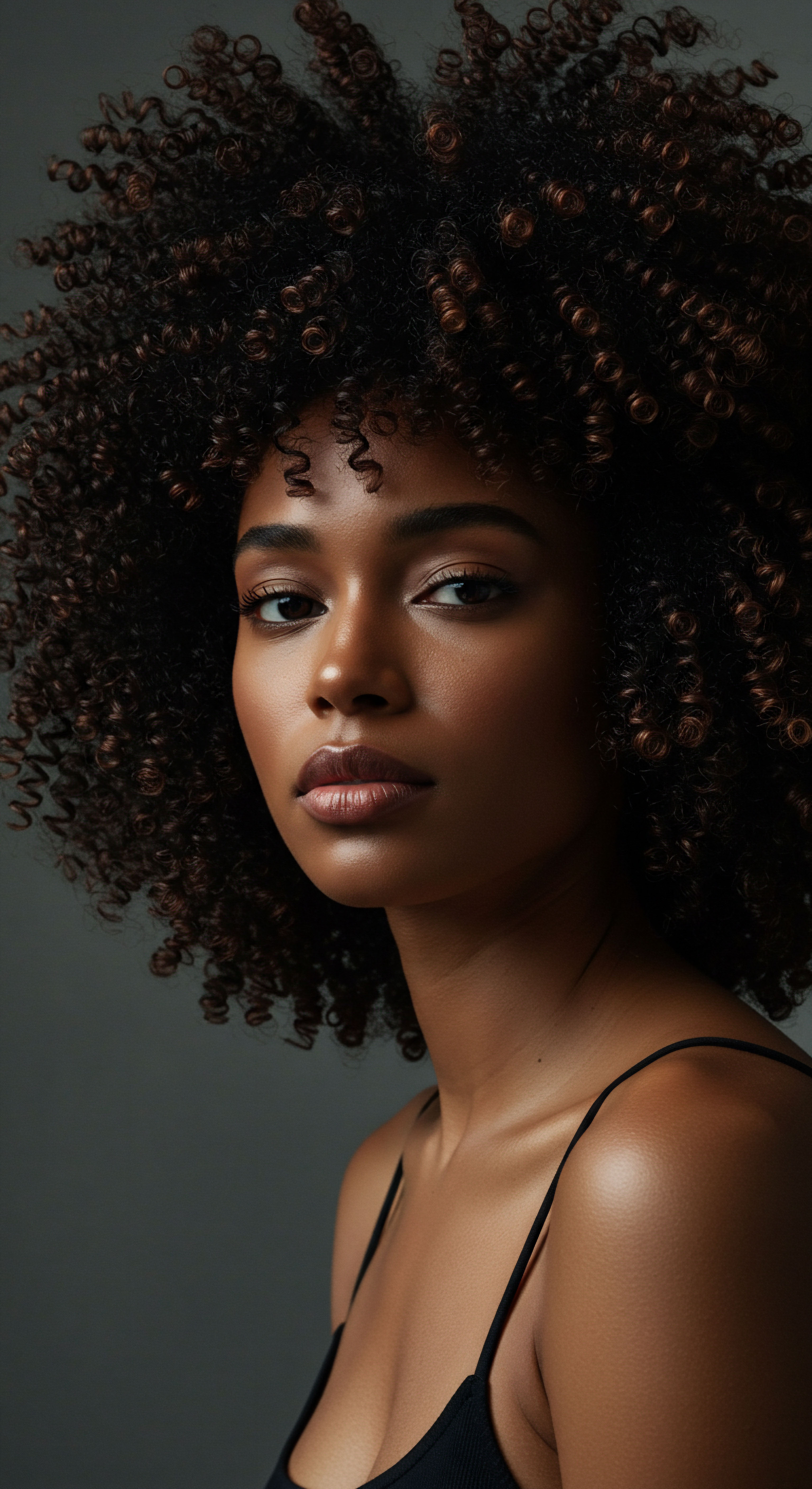
Roots
The quiet moments of rest hold a surprising sway over the vibrancy of our coils. Often, we consider our daytime routines, the products, the styling, yet the hours we spend in slumber, seemingly passive, are profoundly active for our hair. It is within this nightly sanctuary that the very architecture of our strands, particularly those with a delightful coil, either finds its calm or faces its greatest tests. To truly grasp how sleep habits shield these delicate formations from breakage, we must first look beneath the surface, understanding the unique characteristics that render coily hair both breathtakingly beautiful and remarkably vulnerable.
Consider the intricate nature of a single coily strand. Unlike its straighter counterparts, which present a more uniform, cylindrical cross-section, coily hair often exhibits an elliptical or flattened shape. This structural distinction, combined with the frequent twists and turns along its length, means that natural oils from the scalp struggle to descend the entire shaft, leaving coils predisposed to dryness.
This inherent dryness, coupled with the numerous points where the hair bends and changes direction, creates areas of heightened fragility. Each bend represents a potential stress point, a place where the hair’s outer protective layer, the cuticle, can lift or become compromised, exposing the inner cortex to damage.
The nightly hours, seemingly passive, are profoundly active for our hair’s health.
Understanding the anatomy of these unique strands is paramount. The hair shaft itself comprises three primary layers ❉ the medulla (innermost, sometimes absent), the cortex (the central, strength-giving layer), and the cuticle (the outermost protective scales). In coily hair, the cuticle layers can be larger and spaced further apart than in wavy or straight hair, and their edges may be less smooth. This morphological characteristic contributes to the faster rate at which coily hair loses moisture.
When moisture escapes, the hair becomes less pliable, more rigid, and consequently, more susceptible to mechanical stress. This mechanical stress, often encountered during sleep, translates directly into breakage.
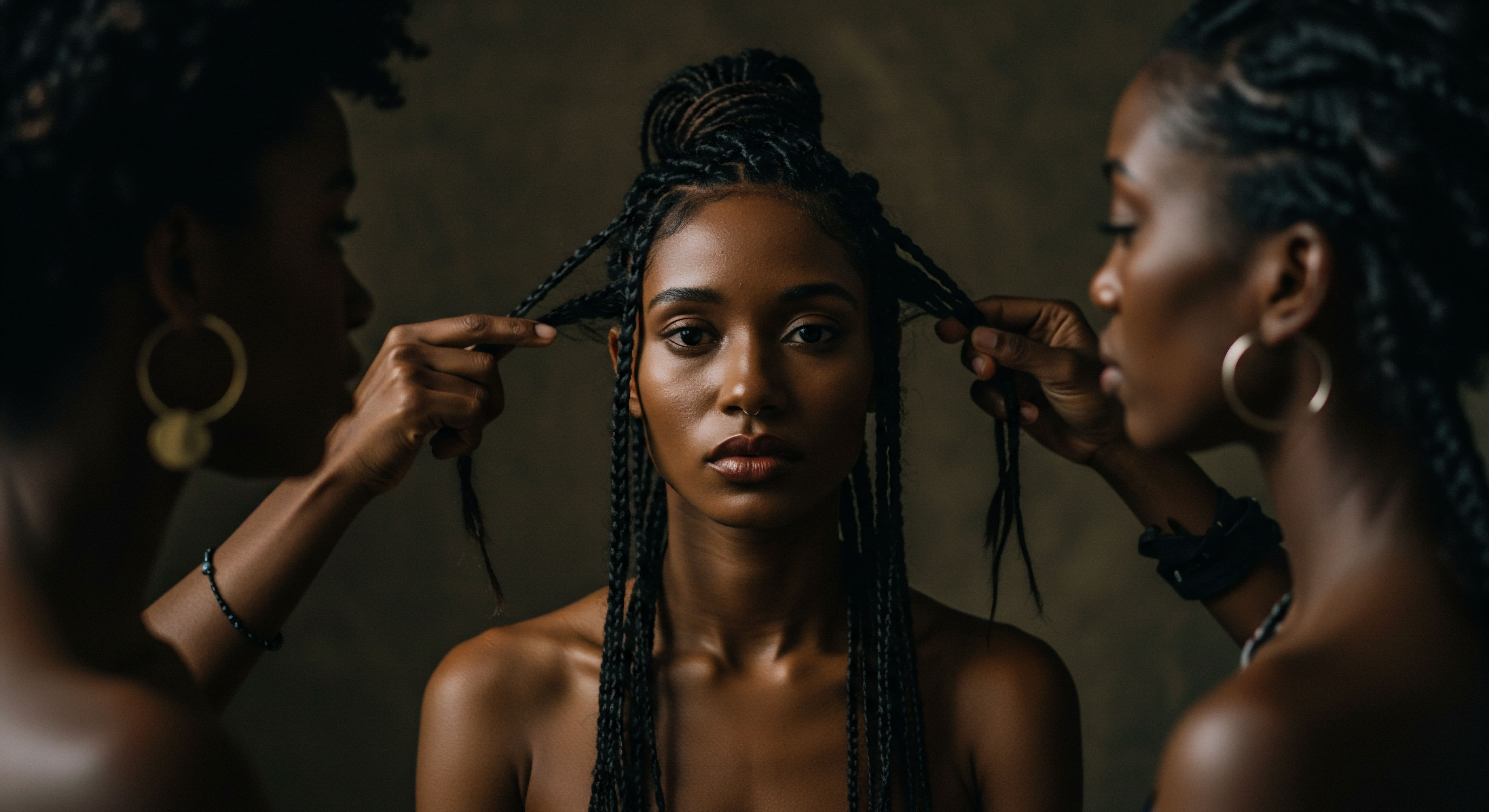
Hair Anatomy and Physiology Specific to Textured Hair
The distinct morphology of coily hair dictates a different physiological response to external forces. The very act of forming a coil involves uneven distribution of keratin, the primary protein of hair. Some research suggests that curly hair may have a greater amount of keratin around the sides and less in the center, making the inner layer almost hollow.
This distribution contributes to its inherent fragility. When subjected to friction or tension, these already vulnerable points are where fracture is most likely to occur.
- Cuticle Integrity ❉ The outermost layer, composed of overlapping cells, acts as a shield. When these cells lift or chip, the hair’s internal structure becomes exposed and prone to damage.
- Moisture Content ❉ Coily hair’s spiral shape impedes the natural flow of sebum, leading to dryness, which significantly reduces its elasticity and increases breakage risk.
- Tensile Strength ❉ This refers to the force a hair strand can withstand before breaking. Coily hair generally exhibits lower tensile strength compared to straighter hair types due to its structural characteristics.
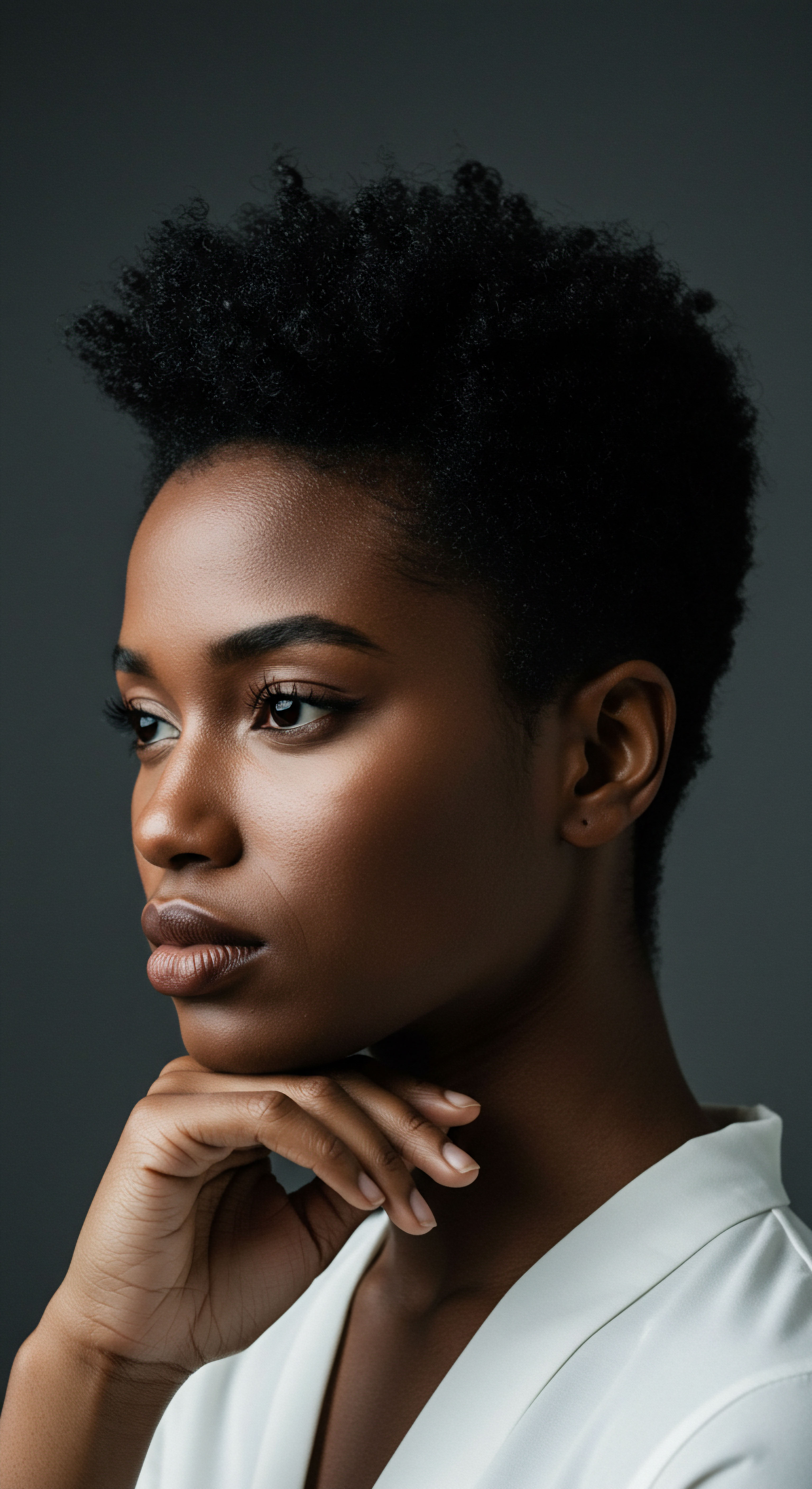
What Makes Coily Hair Prone to Breakage?
The unique helical geometry of coily hair is a primary factor in its propensity for breakage. Each curve and twist creates a point of weakness where the strand can snag or snap under mechanical stress. This is compounded by the fact that coily hair tends to be drier, making it less elastic. When hair is dry, it loses its ability to stretch and recoil, behaving more like a brittle material.
A study exploring the mechanical properties of hair fibers highlights the “toe region” in stress-strain graphs for curly, coily, or kinky hair, representing the tensile force needed to uncurl the natural shape before stretching. This region is virtually absent in straight hair, indicating a unique mechanical vulnerability for textured hair.
Environmental elements also play a role. Humidity, for instance, can cause dry coily hair to swell unevenly, further disrupting the cuticle and making it more prone to tangling and subsequent breakage during detangling. Conversely, dry air can strip hair of its natural moisture, exacerbating brittleness.
The very air we breathe and the water we use can impact the hair’s resilience. Pollutants and hard water can strip natural oils and leave mineral deposits, making hair dull and susceptible to damage.
Therefore, understanding the foundational structure of coily hair, its inherent dryness, and its unique mechanical properties is the first step toward devising effective sleep habits that preserve its strength and vitality.
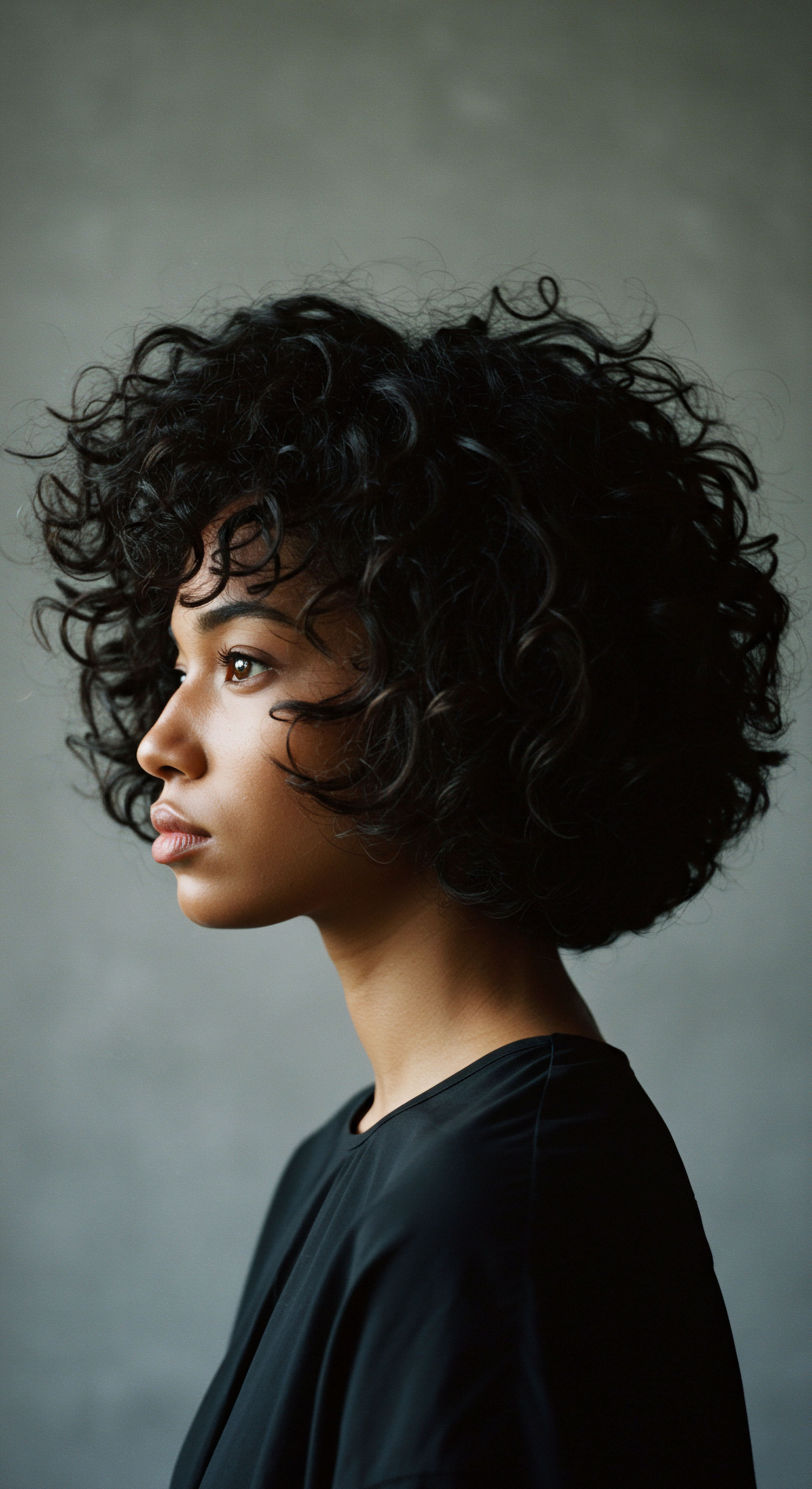
Ritual
As the sun dips below the horizon and the day’s demands recede, a different kind of preparation begins for our coils. The wisdom of daily practices, passed down through generations and refined by contemporary understanding, comes to the forefront. This section offers a gentle guide to nightly practices that can transform sleep from a potential source of hair stress into a time of restorative calm. These are not merely steps; they are intentional acts of care, designed to honor the unique needs of coily strands and shield them from the friction and dehydration that often lead to breakage.
The simple act of lying down for several hours can create significant friction between hair and bedding, particularly with cotton pillowcases. This constant rubbing can lift the cuticle, leading to frizz, tangles, and ultimately, breakage. The objective of a thoughtful nighttime routine is to minimize this mechanical abrasion and preserve the hair’s delicate moisture balance.

Protective Styling for Nightly Rest
The choice of hairstyle before bed is perhaps the most direct way to reduce physical stress on coils. Loose, contained styles are preferable to leaving hair completely unbound, where it can rub against surfaces and tangle.
- Loose Braids ❉ A single, loose braid or a few larger braids can keep coils grouped together, preventing them from snagging and stretching against bedding. The key is to avoid tightness at the roots, which can cause tension and stress on the scalp.
- Pineappling ❉ For those with shorter or medium-length coils, gathering hair into a loose, high ponytail at the crown, secured with a soft scrunchie, keeps the bulk of the hair elevated off the pillow. This reduces friction on the length of the strands.
- Buns or Twists ❉ A loose bun at the top of the head or several large two-strand twists can offer similar protection, keeping coils contained and minimizing surface contact. Again, softness in the ties is paramount.
These styles are not about achieving a look for the morning, but about creating a protective cocoon for the hair during its most vulnerable hours.

What Material is Best for Pillowcases and Head Coverings?
The surface your coils rest upon significantly impacts their health. Traditional cotton pillowcases, while comfortable, are absorbent and can draw moisture from hair, leaving it dry and prone to breakage. Their rougher fibers also create friction.
| Material Cotton |
| Key Characteristic Absorbent, rough fibers |
| Impact on Coily Hair Draws moisture, increases friction, leads to frizz and breakage. |
| Material Satin |
| Key Characteristic Smooth, synthetic blend |
| Impact on Coily Hair Reduces friction, less absorbent than cotton, can still trap heat. |
| Material Silk |
| Key Characteristic Smooth, natural protein fibers, less absorbent |
| Impact on Coily Hair Minimizes friction, retains moisture, promotes cuticle integrity. |
| Material Silk stands as a superior choice for protecting coily hair during sleep. |
Silk Pillowcases are widely recommended for textured hair due to their smooth surface, which reduces friction and allows hair to glide effortlessly. This minimizes cuticle damage, tangles, and frizz. Moreover, silk is less absorbent than cotton, helping coils retain their natural oils and applied products.
Similarly, a Silk Bonnet or scarf provides an additional layer of protection, completely enclosing the hair and shielding it from direct contact with bedding. This also helps to maintain moisture levels and preserve styled hair.
A soft sleep surface and contained styling create a nightly haven for delicate coils.

Preparing Coils for Rest
Beyond styling and surface choice, a few preparatory steps can make a profound difference.
- Detangling ❉ Gently detangle hair before bed using a wide-tooth comb or fingers. This prevents small knots from becoming larger, more damaging tangles overnight, which can lead to breakage when attempting to comb in the morning. Dry detangling, perhaps with a light oil, can be particularly beneficial.
- Moisture Application ❉ Coily hair thrives on moisture. A light application of a leave-in conditioner or hair oil before bed can help seal the cuticle and prevent dehydration during sleep. This also provides a slip that further reduces friction.
- Ensuring Dryness ❉ Going to bed with wet hair significantly increases its vulnerability. Hair is weakest when wet, as water breaks the hydrogen bonds, making it more elastic and prone to stretching and snapping. Allow hair to air dry completely or use a diffuser on a cool setting if washing hair in the evening.
These practices, when woven into a consistent nighttime ritual, become a powerful defense against breakage, allowing coils to rest and rejuvenate, ready to greet the new day with renewed vitality.
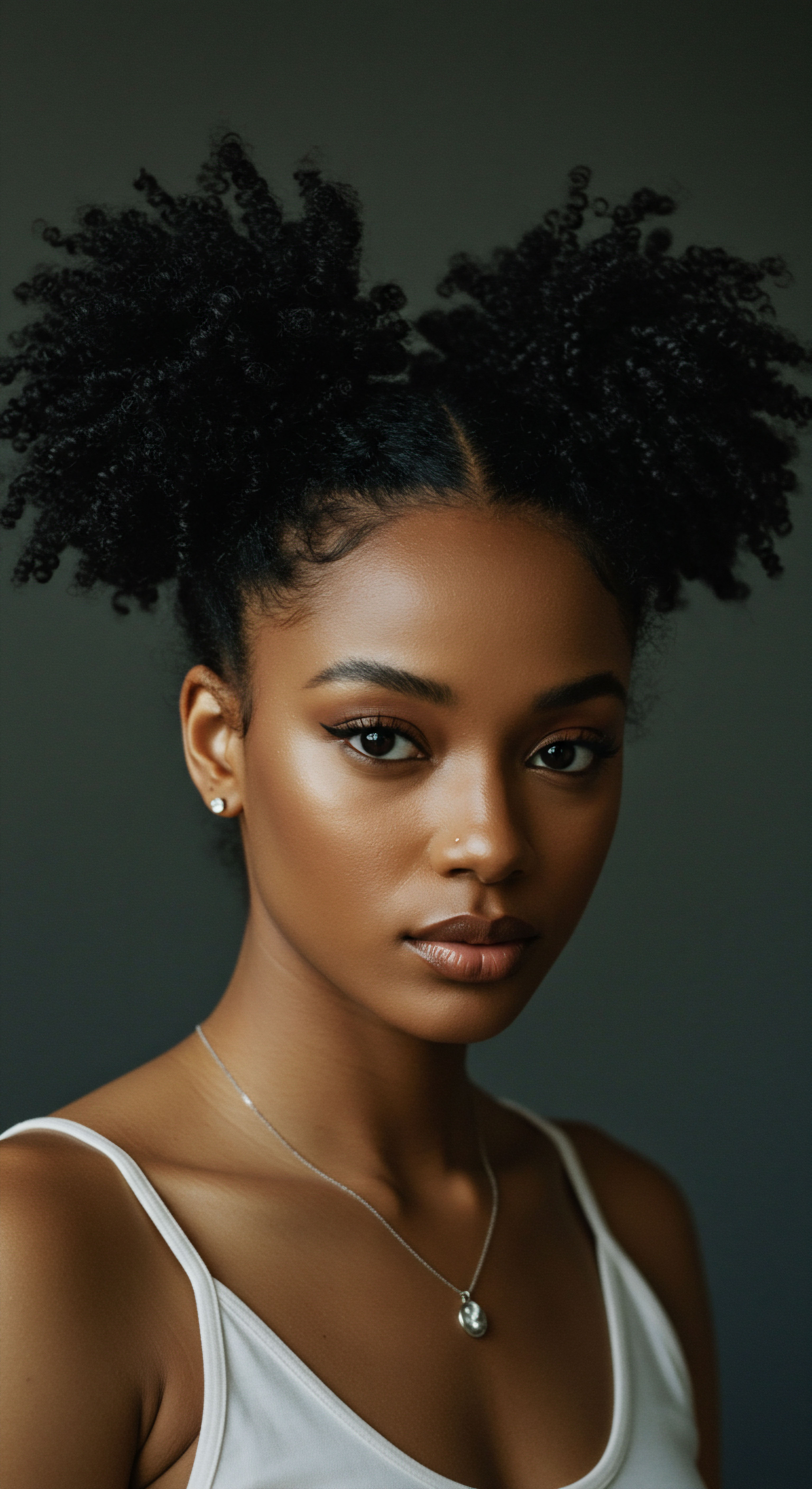
Relay
Beyond the visible rituals, what deeper forces shape the integrity of our coils during slumber? The inquiry into sleep habits and hair breakage extends into the subtle interplay of biology, environment, and even the historical echoes of care. Here, we peel back layers, moving past simple recommendations to consider the underlying mechanisms and broader implications, drawing on scientific insights and cultural legacies that illuminate the path to resilient coils.
The mechanical stress experienced by hair during sleep is a primary contributor to breakage. Every shift, every turn, every brush against a pillowcase exerts a force upon the hair shaft. For coily hair, with its inherent structural irregularities and tendency towards dryness, this constant friction can be particularly damaging.
The cuticle, the hair’s protective outer layer, is comprised of overlapping scales. Repeated rubbing against a rough surface, like a cotton pillowcase, can lift these scales, exposing the cortex and leading to dryness, frizz, and eventual fracture.
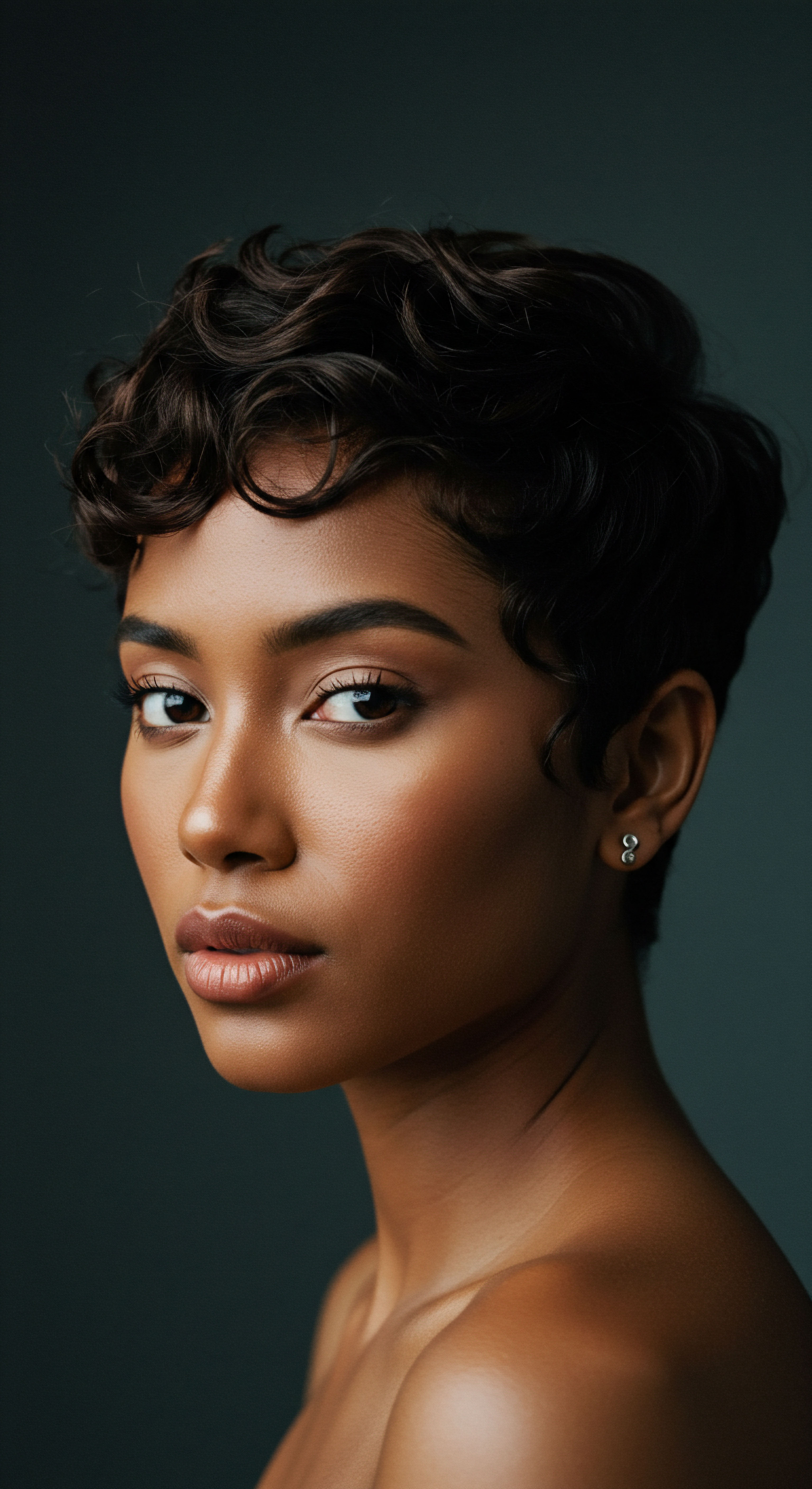
How Does Friction Damage Coily Hair During Sleep?
Friction during sleep manifests as a silent assailant for coily hair. As an individual moves, the hair rubs against the pillowcase, causing mechanical abrasion. This continuous, low-level trauma degrades the hair cuticle. A study published in the Journal of Cosmetic Dermatology confirmed that smoother fabrics, such as silk, significantly prevent hair shaft damage caused by repeated friction.
This research underscores the physical vulnerability of hair to its sleeping environment. The force required to uncurl and stretch coily hair before it reaches its breaking point is a measurable parameter, with coily hair exhibiting distinct stress-strain behaviors compared to straight hair. The repeated application of even small forces over many hours can accumulate into substantial damage.
Moreover, the very nature of coily hair means it is more prone to tangling and knotting. When these knots are present and subjected to friction, the strands within the knot experience heightened tension and localized stress, making them more likely to snap. The rough surface of common pillowcases exacerbates this by creating more points for strands to catch and pull.
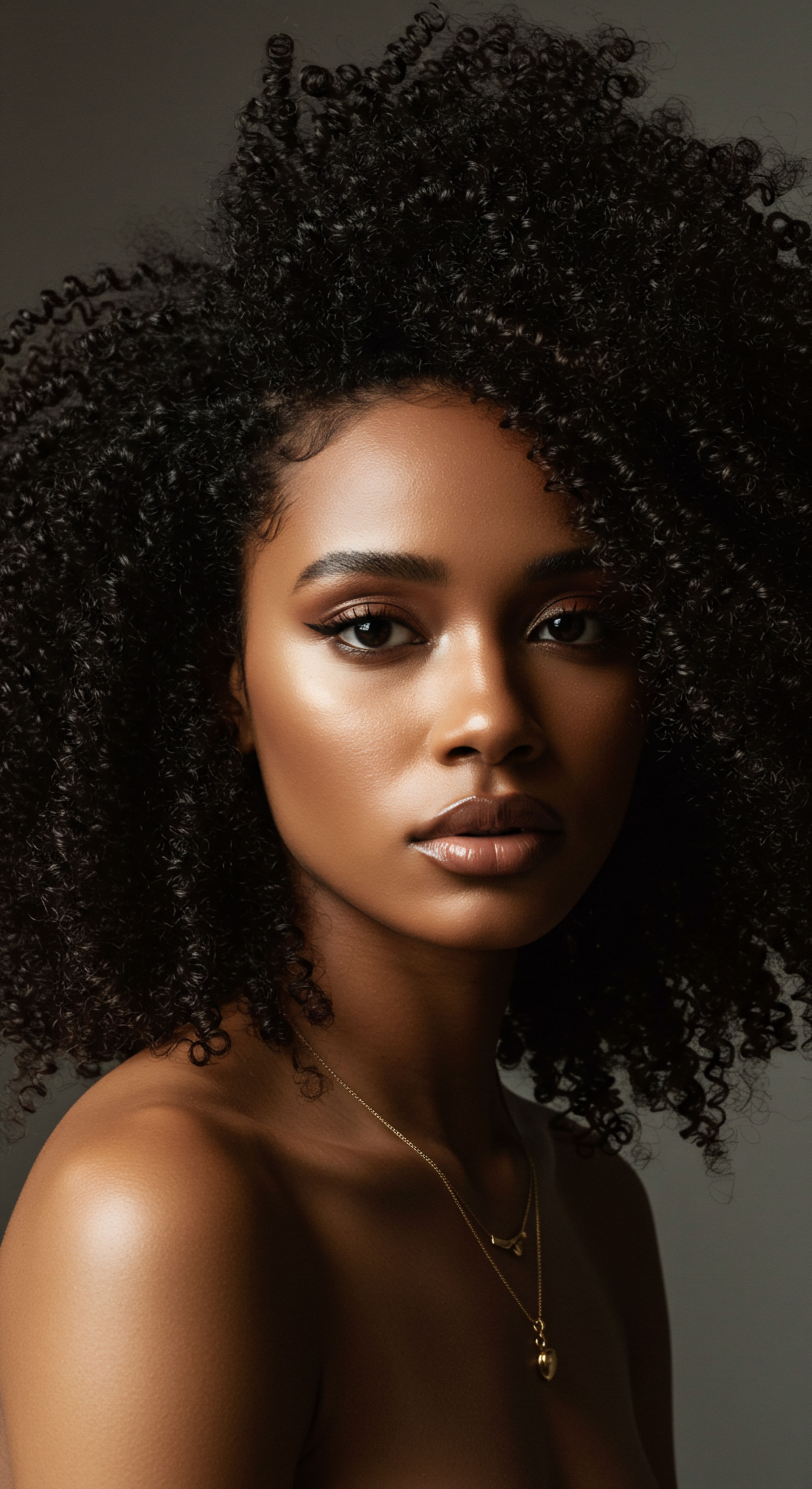
Do Environmental Conditions in the Bedroom Affect Coils at Night?
The ambient conditions within the sleeping space wield considerable, often overlooked, influence over hair health. Humidity levels, for instance, play a delicate balancing act. Air that is too dry can strip coils of their vital moisture, leaving them brittle and susceptible to breakage. Conversely, excessively high humidity can cause already dry hair to absorb too much moisture from the air, leading to swelling and frizz, which also makes hair more prone to tangling and subsequent damage.
Consider a study on environmental factors and hair health, which highlights how both high and low humidity levels can negatively impact hair. Low humidity dries out hair, leading to split ends and breakage, while high humidity can make hair frizzy, unmanageable, and prone to tangling. Maintaining a balanced humidity level in the bedroom, perhaps through the use of a humidifier in drier climates, can serve as a preventative measure, ensuring coils remain supple and resilient throughout the night. This micro-environment within the bedroom directly impacts the hair’s ability to retain its integrity.

What Can Science Tell Us About Hair Strength and Nighttime Care?
Scientific inquiry into hair’s mechanical properties provides a compelling argument for intentional nighttime care. Research indicates that the tensile strength of hair, its resistance to breaking under tension, is lower when wet. Water weakens the hydrogen bonds within the hair’s protein structure, making it more elastic but also more prone to stretching and snapping. This explains why sleeping with wet hair is often discouraged; the constant movement against a pillow while in this weakened state significantly increases the likelihood of damage.
The delicate balance of moisture and friction during sleep determines the vitality of coily strands.
A lesser-known, yet significant, data point concerning hair strength and sleep comes from studies on hair fiber mechanics. Researchers, when examining the stress-strain behavior of different hair types, have noted the distinct “toe region” for curly and kinky hair. This region represents the initial phase where the hair fiber straightens from its natural curl pattern under tensile force before it begins to truly stretch. For coily hair, this “uncurling” requires a measurable force.
One study reported that the “stretch ratio” (a parameter quantifying the force required to uncurl a strand until straight) was approximately 1.1 for kinky hair and 1.4 for curly hair, compared to negligible for straight hair. This indicates that the very act of “unfurling” or straightening coils, even passively during sleep movements, can impose mechanical stress that is unique to textured hair. This intrinsic mechanical characteristic makes coily hair particularly vulnerable to repetitive low-level forces, like those experienced during sleep. The cumulative effect of these small, repeated stresses can lead to micro-fractures in the cuticle and cortex, manifesting as breakage over time.
The broader physiological context of sleep also plays a role. Adequate sleep supports hormone regulation and cellular repair, both of which are critical for healthy hair growth and follicle activity. Chronic sleep disruption can elevate stress hormones like cortisol, which may contribute to hair thinning and shedding by disrupting the hair growth cycle. Thus, the quality of sleep extends its influence beyond preventing physical breakage to supporting the very foundation of hair health.
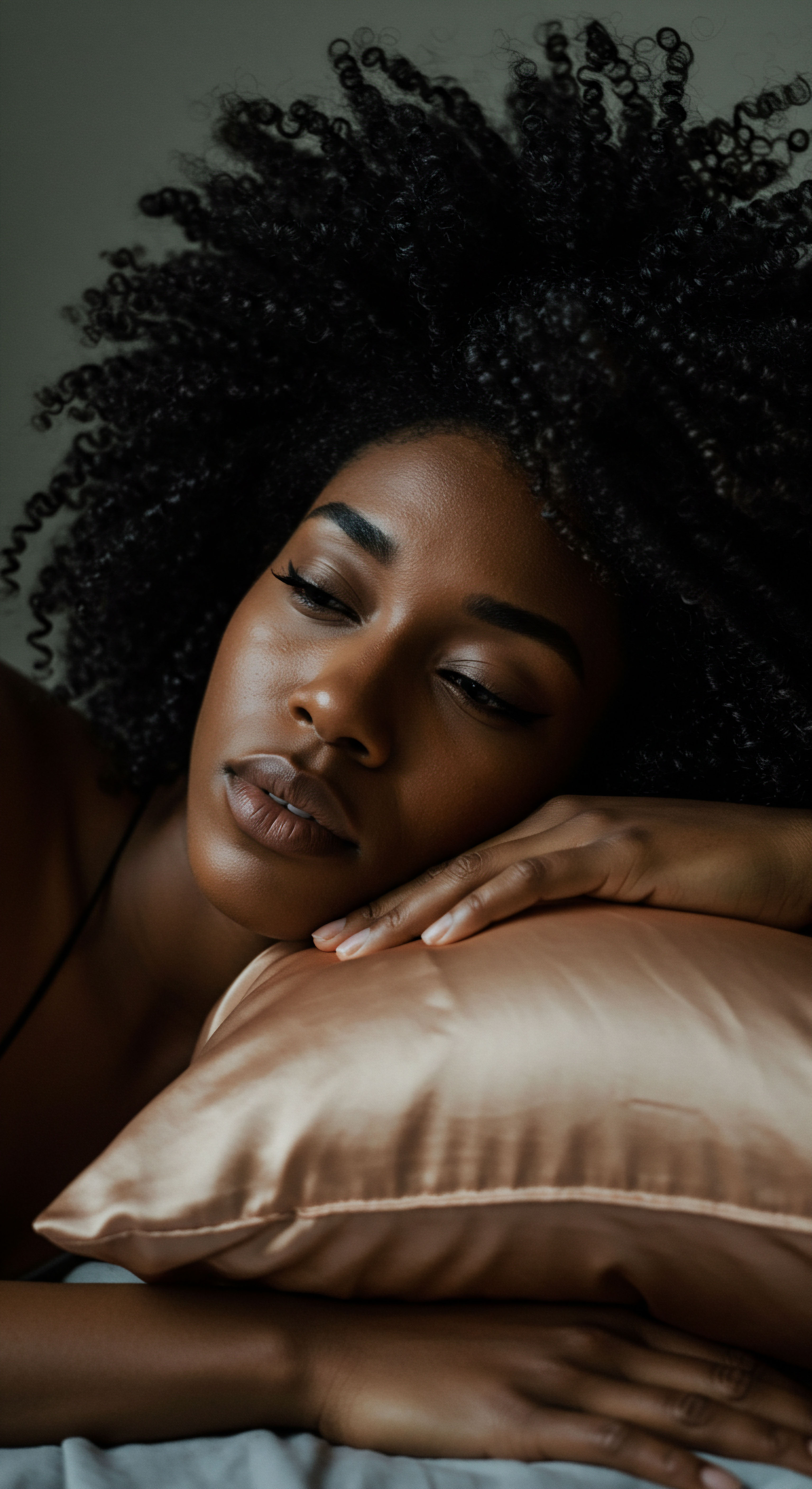
Reflection
As our exploration of sleep habits and coily hair concludes, we are left with a deeper appreciation for the quiet hours of the night. It is a time not merely for rest, but for intentional care, a period when our understanding of hair’s unique architecture and its relationship with its environment can truly come to life. The choices we make before drifting off—from the softness of a pillowcase to the gentle gathering of coils—are whispers of wisdom, echoing through generations of textured hair care. Each small adjustment becomes a quiet affirmation of respect for these remarkable strands, allowing them to retain their strength, their moisture, and their inherent beauty, ready to greet the light of a new day, unbroken and vibrant.
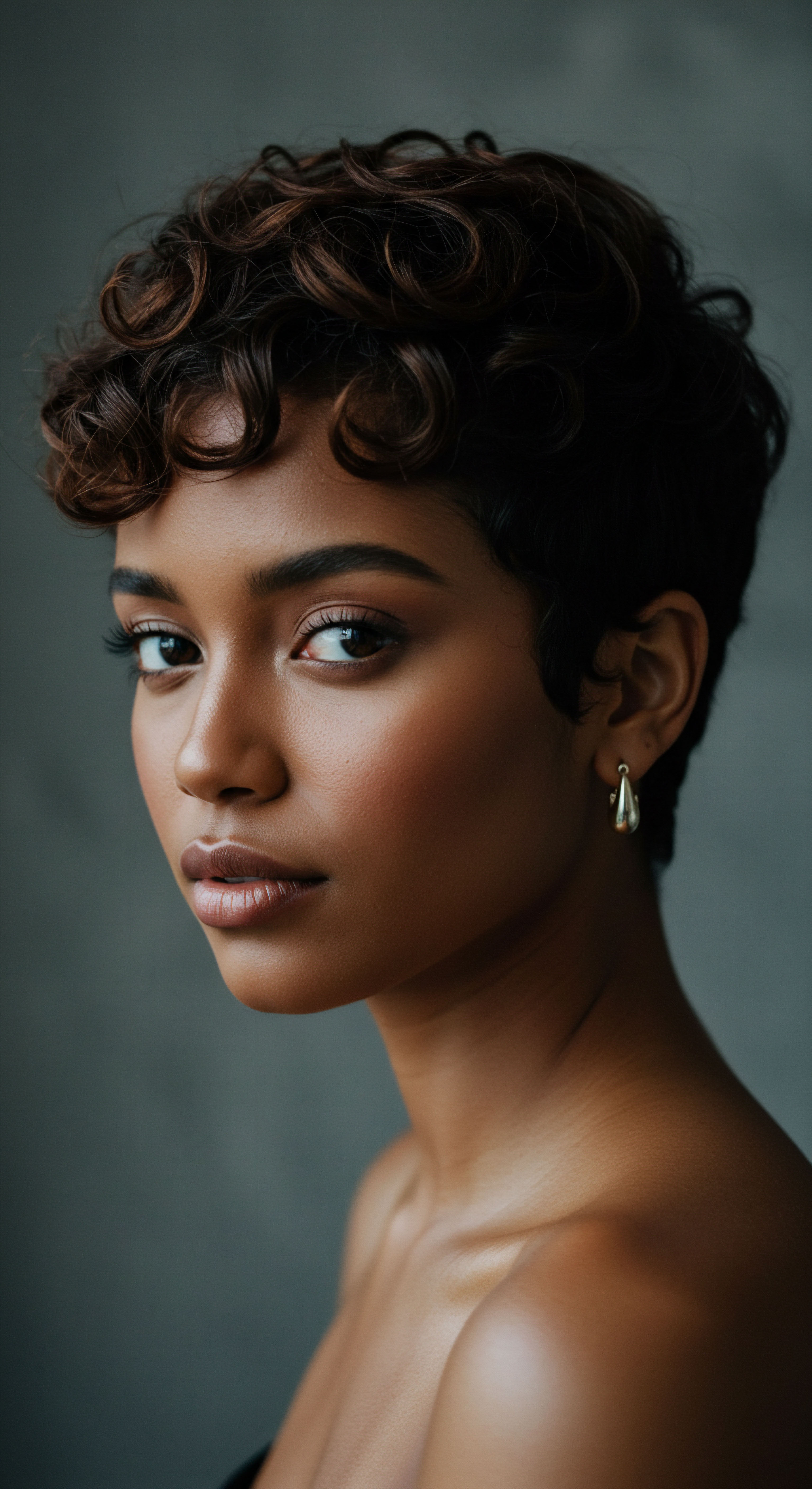
References
- Byrd, Ayana. Hair Story ❉ Untangling the Roots of Black Hair in America. St. Martin’s Press, 2001.
- Dabiri, Emma. Twisted ❉ The Tangled History of Black Hair Culture. Harper Perennial, 2020.
- Robins, S. “The what, why and how of curly hair ❉ a review.” International Journal of Cosmetic Science, vol. 41, no. 6, 2019, pp. 547-557.
- Schmidt, Timothy. “Is It Bad to Sleep with Wet Hair?” University of Utah Health, 2023.
- “A New Approach to Classify Curly Hair Phenotypes via New Qu.” ChemRxiv, 2024.
- “Hair Care Practices in Women of African Descent.” DermNet.
- “Understanding the Structure and Fragility of Curly Hairs.” Fit Cosmeticos, 2017.
- “New ways to measure curls and kinks could make it easier to care for natural hair.” American Chemical Society, 2023.
- “The Long-Term Effects of Slipssy ❉ Protecting Your Hair Follicles.” Slipssy, 2025.
- “Hair, Scalp Health Linked to Perceived Stress and Sleep Quality.” HCPLive, 2025.
- “Impact of Sleep Deprivation on Hair Health.” Clinikally, 2024.
- “Does Lack of Sleep Cause Hair Loss?” Good Health by Hims, 2024.